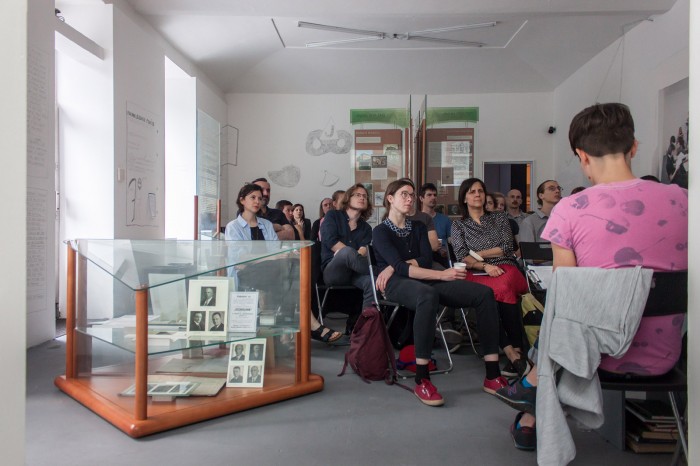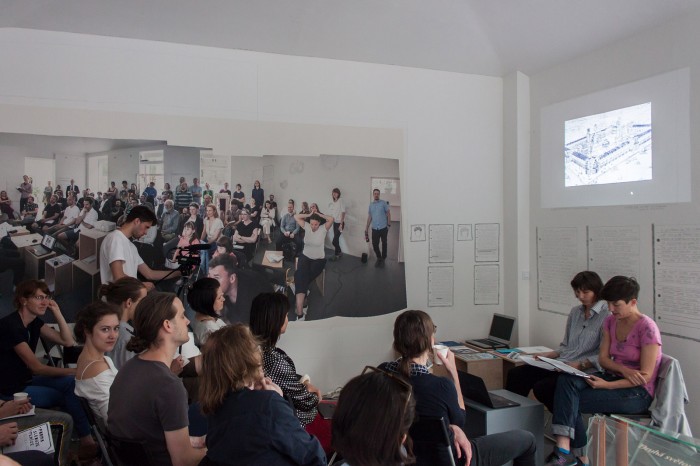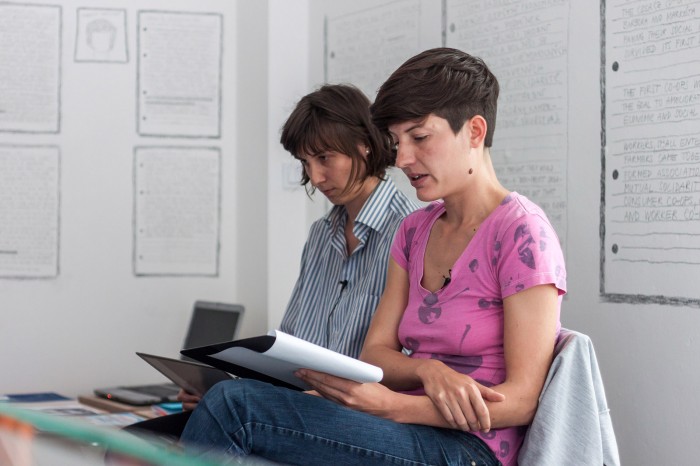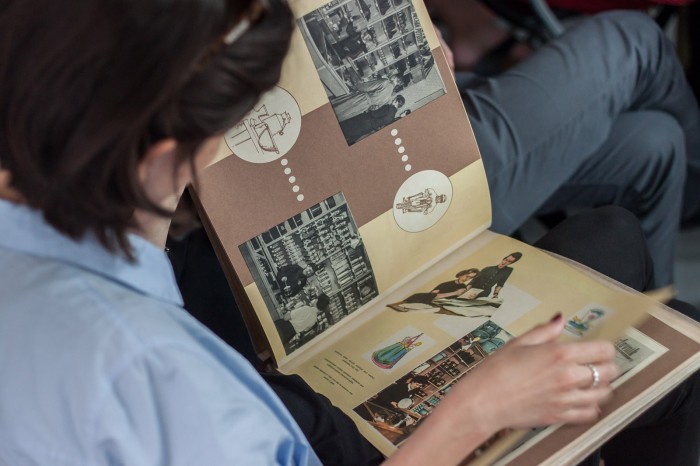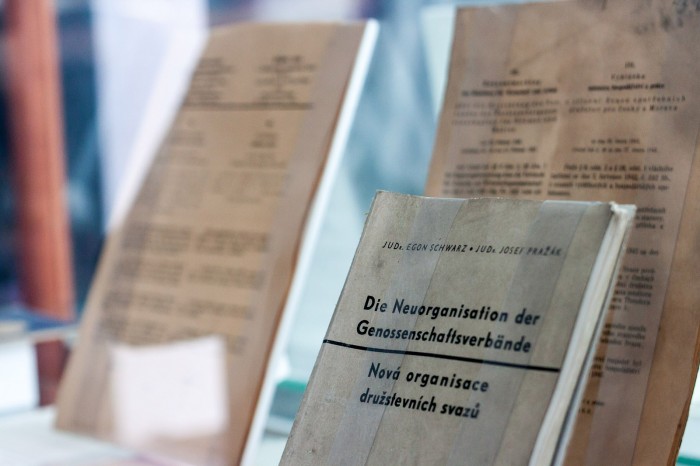Cooperative Movement or Where Does the Profit From My Money Go?
{~ '2018-05-22 00:00:00' | amDateFormat: 'D/M' ~} {~ '19:00' ~}

The second evening show by Markéta Mráčková and Barbora Šimonová, a part of their exhibition Form Follows Money, focuses on the history and principles of cooperative movement in the Czech lands as a part the Austro-Hungarian Empire, the Czechoslovak (Socialist) Republic and the Czech Republic.
The first cooperatives were established to provide their members with improved economic and social conditions for life. Workers, small traders and peasants formed self-help societies built on mutual solidarity (food and consumer cooperatives, credit unions, campaigners and production cooperatives). The aim of first housing associations was to provide cheap housing for workers and employees. Cooperatives were also established to build sites of public interest, culture and education (the National Theatre Cooperative, the Petřín Lookout Tower Cooperative, the Čerčany-Modřany-Dobříš Local Railroad Cooperative).
After the establishment of independent Czechoslovakia, the number of cooperatives grew and their operation range expanded. They also started to differentiate based on their members’ profession, nationality, political affiliations, etc. Associations started to organise educational and social events, established libraries, social gathering premises, and also found their own cooperative construction societies (e.g. the Construction Team of the Czech Women’s Club that realised the building of the Women’s Club).
The Building Promotion Act led to the development of construction and housing cooperatives. In the early 1950s, cooperatives were deprived of business opportunities and were gradually taken over by the state. Cooperative ownership and entrepreneurship were perceived solely as an initial stage of the state ownership. A new type of cooperative was created – the housing cooperative; and the state provided a financial contribution to the members of these cooperatives. Housing cooperatives grew rapidly in number. The cooperative housing fund was gradually aging, and cooperatives had to focus also on repairs and maintenance. After 1989, cooperatives were mistakenly associated with the centrally planned economy, and cooperative or collective forms of ownership were, despite their undeniable qualities, perceived as an anachronism. Today, cooperatives are starting to make progress again.
The display cases and the exhibits were lent by the Museum of the Cooperative Movement (Těšnov 5, Prague 1) from their permanent exhibition.
Acknowledgments: David Füllsack, CEO, Co-operative Association of the Czech Republic; Pavel Černý, director of the Museum of Cooperative, Prague.
Photo: Jonáš Kolařík.
